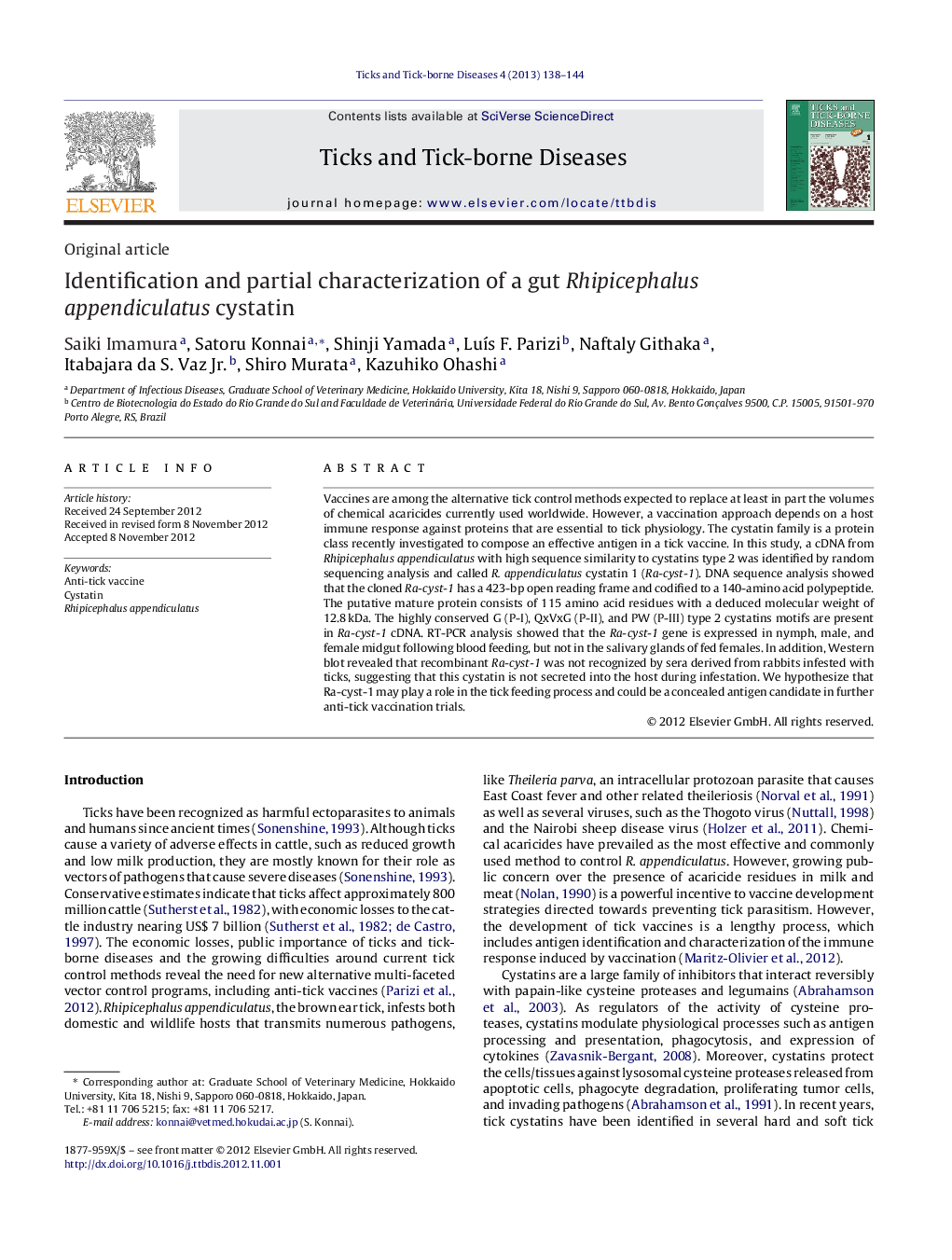| Article ID | Journal | Published Year | Pages | File Type |
|---|---|---|---|---|
| 2474242 | Ticks and Tick-borne Diseases | 2013 | 7 Pages |
Vaccines are among the alternative tick control methods expected to replace at least in part the volumes of chemical acaricides currently used worldwide. However, a vaccination approach depends on a host immune response against proteins that are essential to tick physiology. The cystatin family is a protein class recently investigated to compose an effective antigen in a tick vaccine. In this study, a cDNA from Rhipicephalus appendiculatus with high sequence similarity to cystatins type 2 was identified by random sequencing analysis and called R. appendiculatus cystatin 1 (Ra-cyst-1). DNA sequence analysis showed that the cloned Ra-cyst-1 has a 423-bp open reading frame and codified to a 140-amino acid polypeptide. The putative mature protein consists of 115 amino acid residues with a deduced molecular weight of 12.8 kDa. The highly conserved G (P-I), QxVxG (P-II), and PW (P-III) type 2 cystatins motifs are present in Ra-cyst-1 cDNA. RT-PCR analysis showed that the Ra-cyst-1 gene is expressed in nymph, male, and female midgut following blood feeding, but not in the salivary glands of fed females. In addition, Western blot revealed that recombinant Ra-cyst-1 was not recognized by sera derived from rabbits infested with ticks, suggesting that this cystatin is not secreted into the host during infestation. We hypothesize that Ra-cyst-1 may play a role in the tick feeding process and could be a concealed antigen candidate in further anti-tick vaccination trials.
